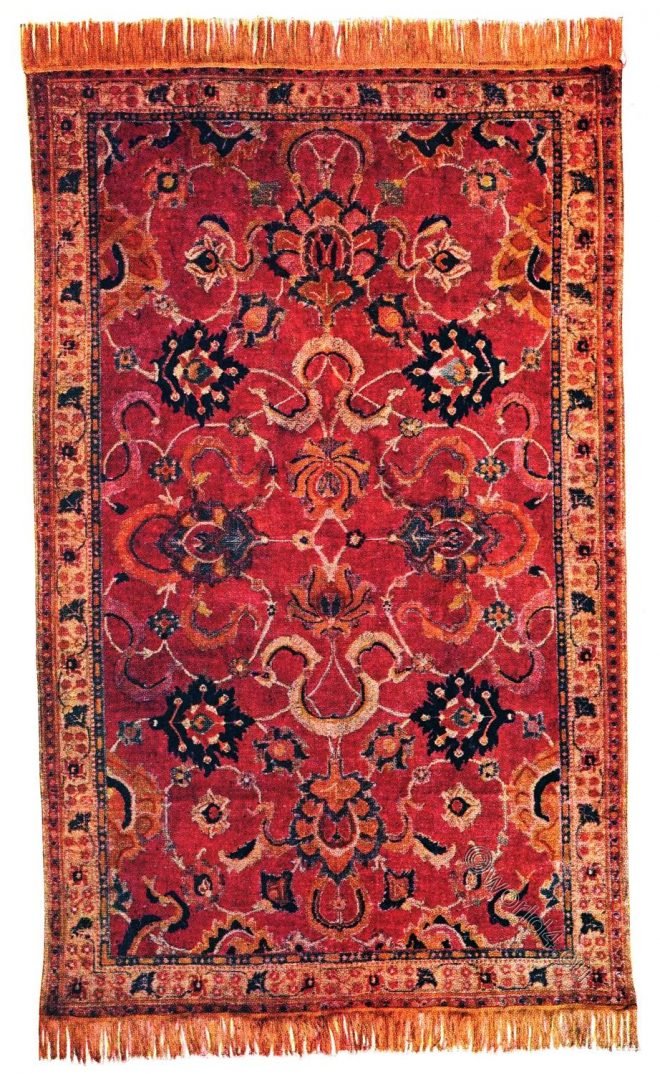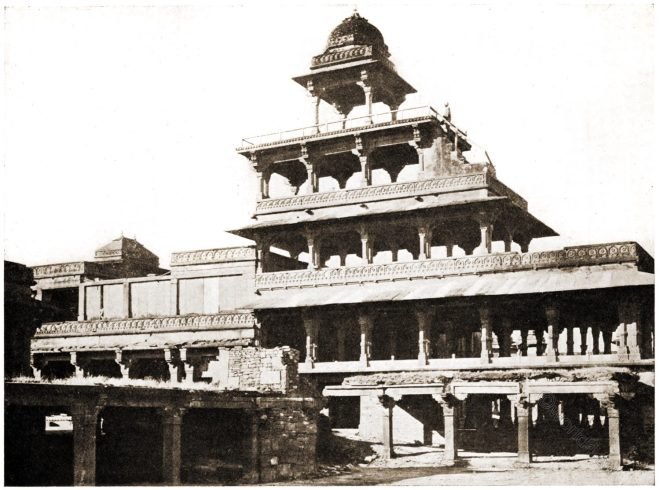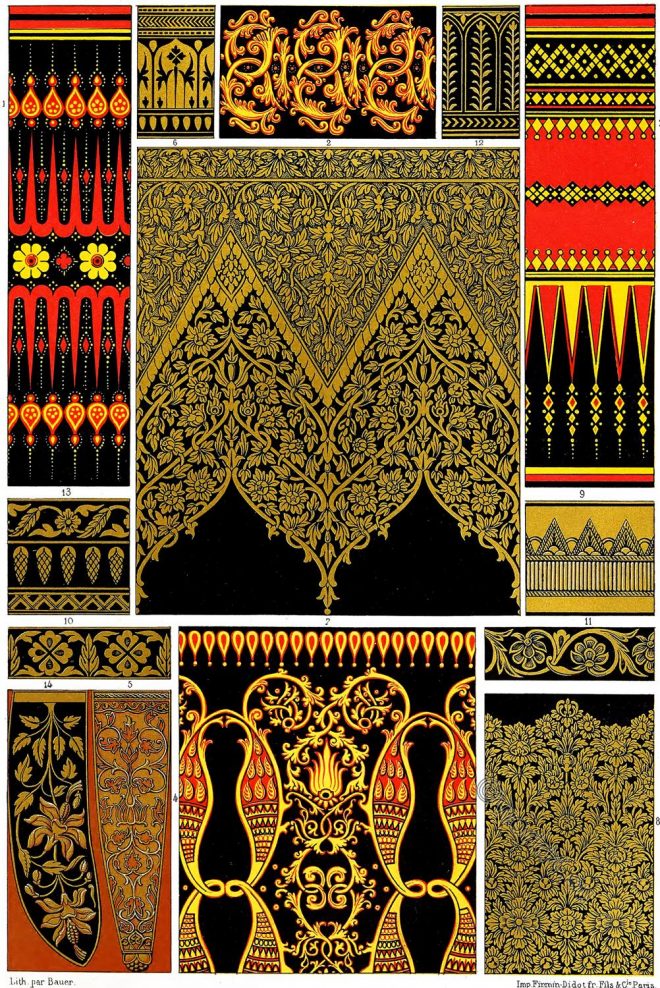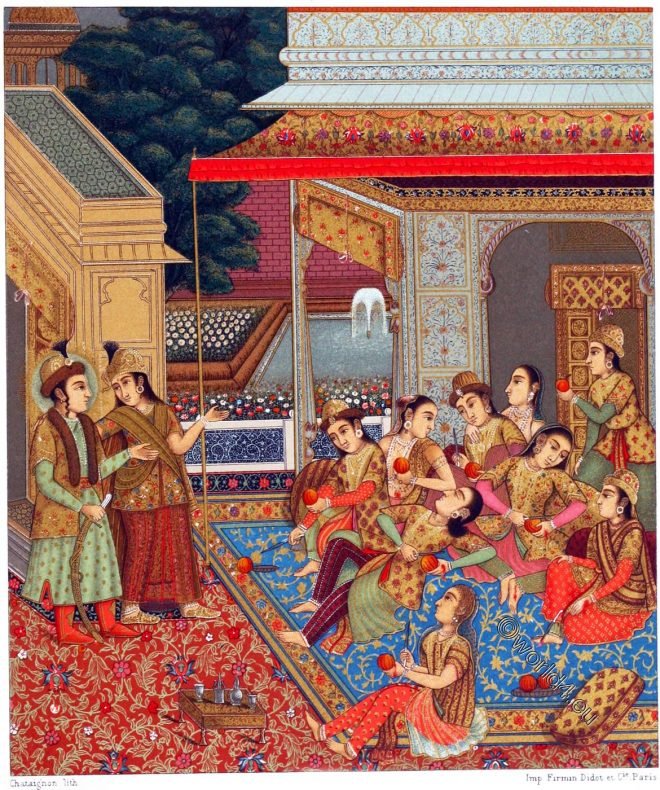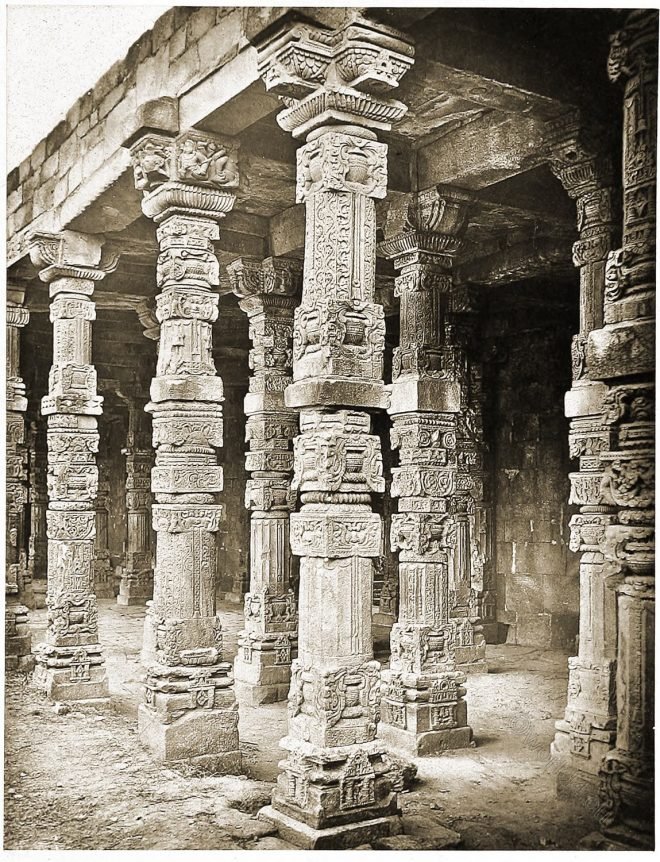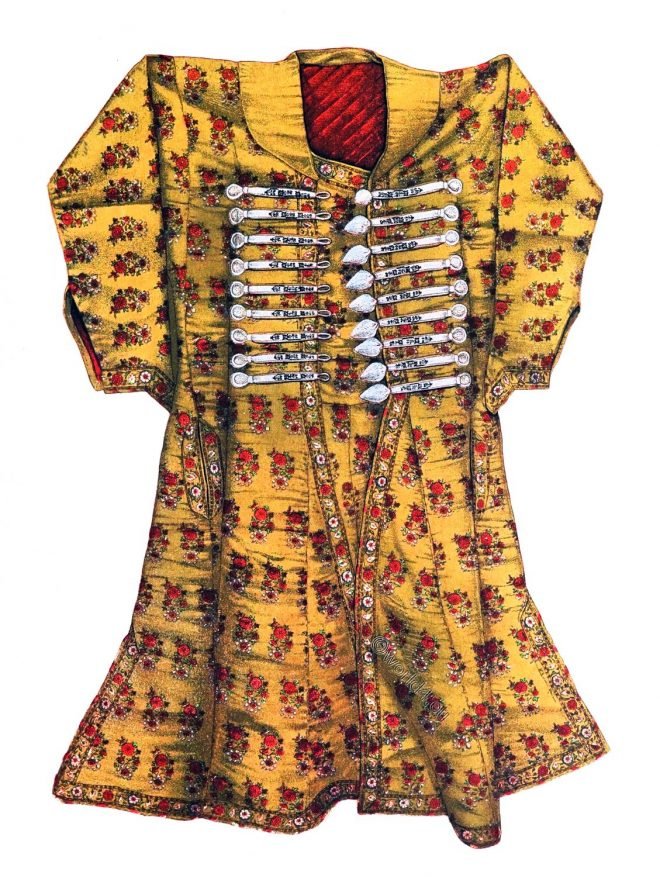The Giant Thorney Bamboo. Nothing can exceed in beauty the graceful bamboo, as its feathery foliage waves and flutters in the breeze.
Category: India
Fashion and Costumes from India
Indo-Persian Rug of the Ballard Collection. India 17th century.
Indo-Persian Rug of the catalogue of oriental rugs in the collection of James Franklin Ballard.
Fatehpur Sikri. The former capital of the Mughal Empire.
Fatehpur Sikri, the “City of Victory”, was the name given by the Great Mogul to the ensemble. The former capital of the Mughal Empire under Great Mughal Akbar I. (1542-1605) was built between 1569 and 1574.
The Art of India. Paintings and Niellos. Oriental style.
Indian Art. Paintings and Niellos. The richness and harmony of the Oriental style. Ornaments on a bow, dagger, sheath of a sword, weapons.
Inner courtyard of an Indian harem of the Mughal period.
The story about Zuleikha and Joseph. Facsimile of an Indian-Persian miniature depicts Zuleika introducing Joseph to her friends who are busy peeling oranges.
Indian Grand Mogul Babur leading a campaign. Military Costumes of India.
Babur setting out with his army. Indian Grand Mogul, leading a campaign. War costumes of the 16th century.
Indian arts and crafts. Weapons, Jewelry and Equipment. Mughal Empire.
Indian arts and crafts. Mughal Empire. Elephant Ankus. Indian dagger called Khuttar. Mongolian helmet from the 16th century.
Mughal Emperor Humayun in the usual court attire of an audience.
Mughal Emperor Nasir ud din Muhammad Humayun in the usual court attire of an audience. Mogul lady in a house costume. Farrukhsiyar, grandson of Grand Mogul Aurangzeb. Farrukhsiyar 10th Grand Mogul of India.
The great beauty of the Colonade in the Quwwat ul-Islam Mosque, Delphi.
The portico of the Quwwat ul-Islam Mosque framing the courtyard area consists of columns/pillars from destroyed Hindu and Jain temples.
Coat of Maharaja Sawai Jai Singh II (1686-1743), founder of Jaipur, India.
Coat of Maharaja Sawai Jai Singh II (1686-1743), founder of Jeypore (Jaipur); silk and gold, embroidered with silk.


